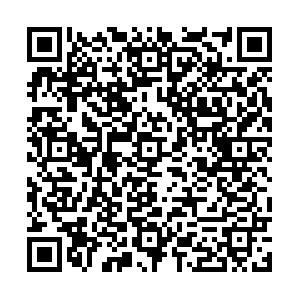Extraction methods for mycoprotein, a yeast-like symbiote isolated from brown planthopper, Nilaparvata lugens, in rice
-
摘要: 为了筛选出适合褐飞虱Nilaparvata lugens类酵母共生菌蛋白质提取的细胞破碎方法,选择超声波破碎法、反复冻融法和液氮研磨法等3种细胞破碎方法提取共生菌吡虫啉敏感菌株和抗性菌株蛋白质。结果表明:菌体显微形态观察发现,使用超声波破碎法和液氮研磨法处理类酵母共生菌的细胞破碎效果均优于反复冻融法,处理后菌体分布均匀,破碎彻底;72 h是提取菌体蛋白质的最佳培养时间。定量分析表明:用超声波破碎法提取蛋白质质量浓度最高,液氮研磨法次之,反复冻融法提取蛋白质质量浓度的效果最差,各方法所提蛋白质质量浓度差异显著(P<0.05)。培养72 h后,超声波破碎法、液氮研磨法和反复冻融法提取的蛋白质质量浓度分别为2.82 gL-1,2.62 gL-1和2.12 gL-1(敏感菌株)及2.64 gL-1,2.53 gL-1和2.05 gL-1(抗性菌株)。十二烷基磺酸钠-聚丙烯酰胺凝胶(SDS-PAGE)电泳分析发现:超声波破碎法获得的蛋白质不仅得率高,且条带清晰,丰度好。液氮研磨法虽得率高,但蛋白质部分降解,条带不清晰;而反复冻融法获得的蛋白质得率最低。超声波破碎法更适合于褐飞虱类酵母共生菌的蛋白质提取,该研究为后续蛋白质的双向电泳实验和分离差异蛋白质提供技术支撑。图4表1参22Abstract: To select the most suitable cell breaking method for protein extraction of the yeast-like symbiote (YLS) isolated from brown planthopper, Nilaparvata lugens, three cell breaking methods: ultrasonication, repeated freeze-thaw, and liquid nitrogen grinding, were used to extract the mycoprotein of susceptible- and resistant-imidacloprid strains of YLS. Analysis was conducted by Duncans new multiple range test (DMRT) and sodium dodecyl sulfatepolyacrylamide gel electrophoresis (SDS-PAGE). Results of observation using cell microscopic morphology showed that the breaking effect of the YLS cells treated with ultrasonication and liquid nitrogen grinding were greater than repeated freeze-thaw. After treatment, cells were uniformly distributed and thoroughly broken. Optimum culture time for mycoprotein extraction was 72 h. Protein concentration for the three methods was significantly different (fd=8, P<0.05) with ultrasonication highest, then liquid nitrogen grinding, and lastly repeated freeze-thaw. After being cultured for 72 h, protein concentrations for the susceptible strain were ultrasonication, 2.82 gL-1; liquid nitrogen grinding, 2.62 gL-1; and repeated freeze-thaw, 2.12 gL-1; protein concentrations for the resistant strain were ultrasonication, 2.64 gL-1; liquid nitrogen grinding, 2.53 gL-1; and repeated freeze-thaw, 2.05 gL-1. Electrophoresis showed that proteins extracted by ultrasonication had clear bands, greater abundance, and more protein; by liquid nitrogen grinding had partial protein degradation and unclear bands; and by repeated freeze-thaw had the least protein. Thus, the ultrasonication method was best for mycoprotein extraction of YLS from N. lugens, and in the future this will provide technical support for two dimensional electrophoresis protein experiments and separation of differential proteins. [Ch, 4 fig. 1 tab. 22 ref.]
-
Key words:
- plant protection /
- Nilaparvata lugens /
- yeast-like symbiote /
- mycoprotein /
- extraction method
-

-
链接本文:
https://zlxb.zafu.edu.cn/article/doi/10.11833/j.issn.2095-0756.2015.02.002
 点击查看大图
点击查看大图
计量
- 文章访问数: 2437
- HTML全文浏览量: 394
- PDF下载量: 611
- 被引次数: 0




 下载:
下载:
